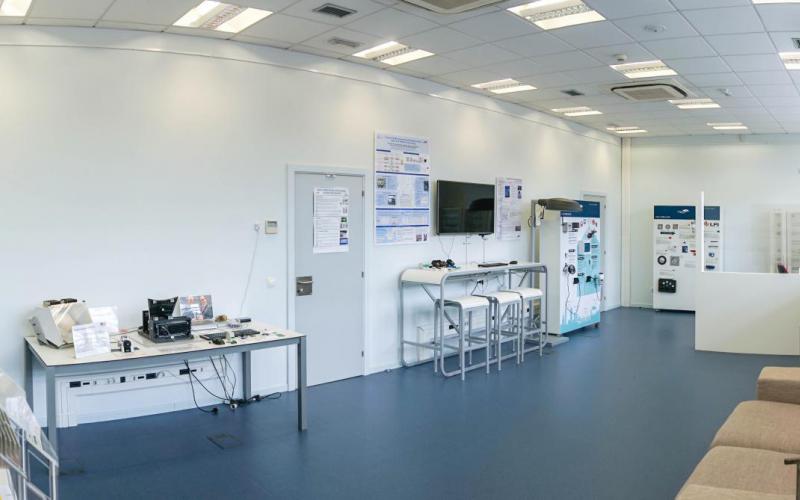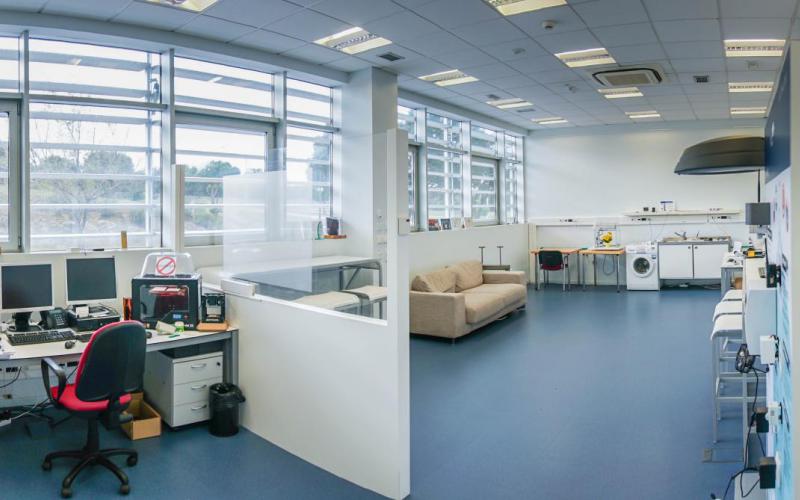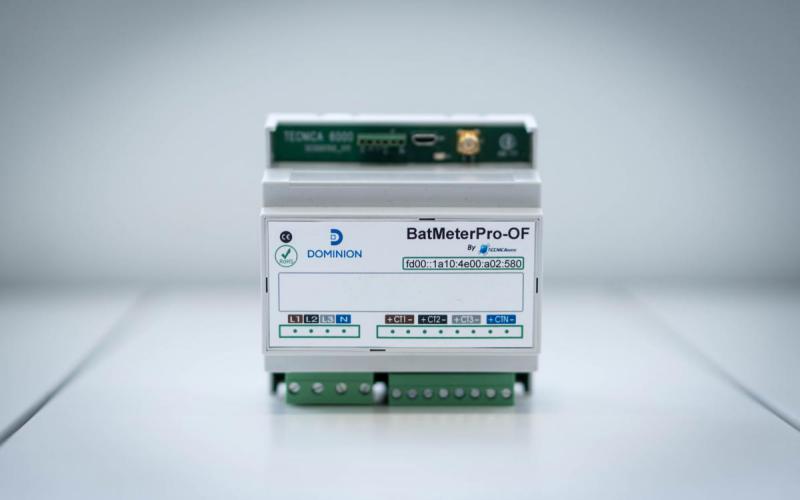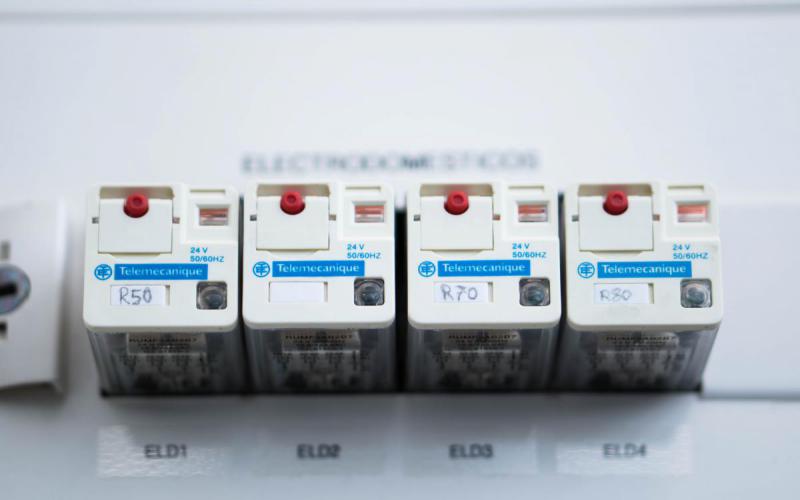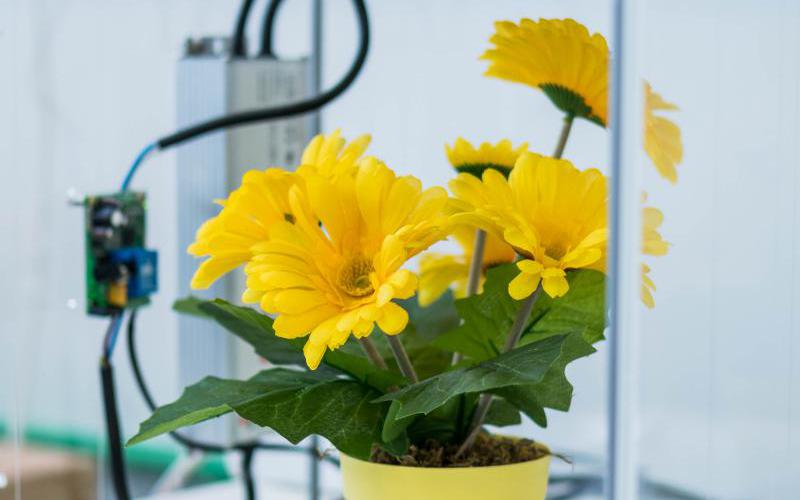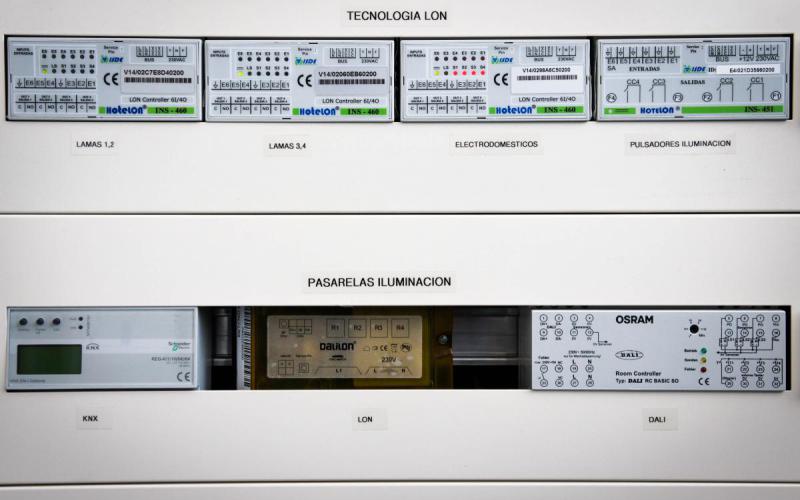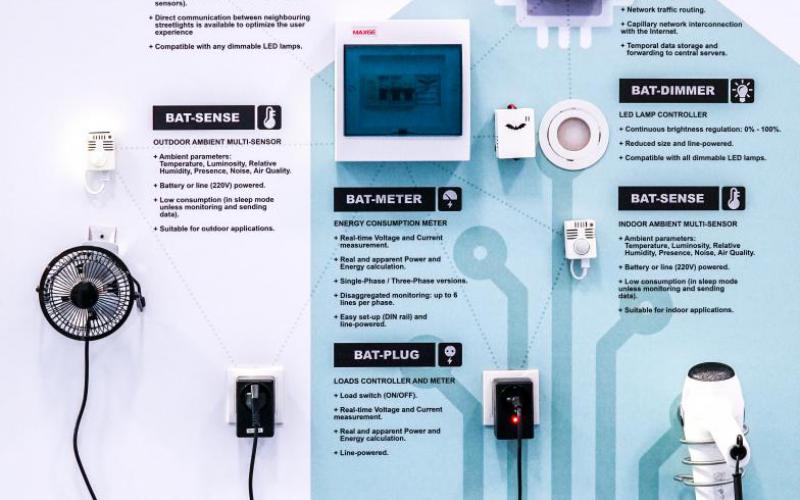Energy Efficiency and Interoperability LAB
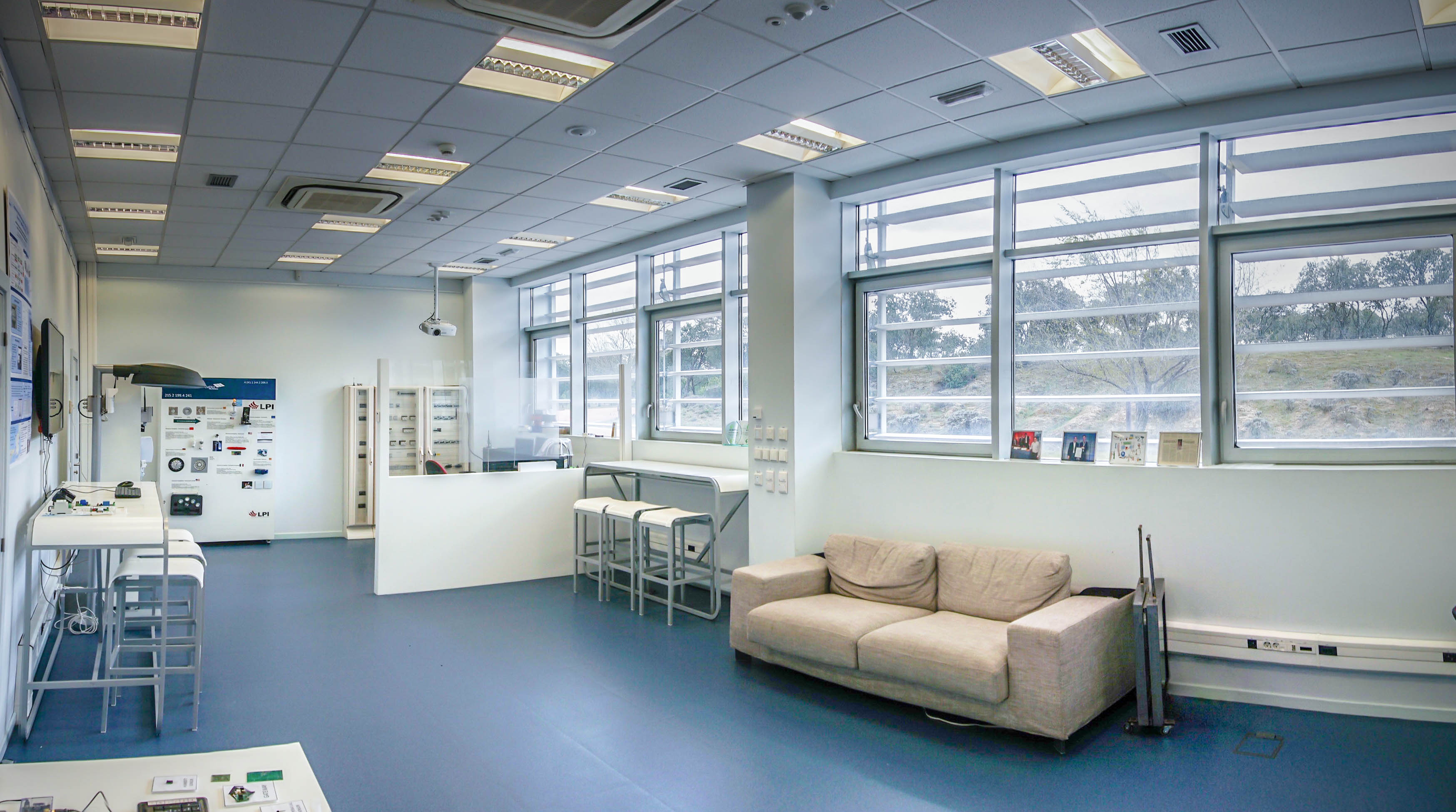
This room is a research place where saving energy and energy efficiency have been made a priority. Here, solutions developed from research are shown and evaluated. This solutions, which have been developed by the Energy Efficiency research group, are such that they contribute to the energy efficiency management and manage different home automation systems such as air conditioning systems, lighting systems or just appliances.
This is why in this room not only the Interoperability Lab for Home Automation Technologies has been set, but also a number of pilot projects have been installed. The aim of these pilots is to show the results of I+D activity developed by the Energy Efficiency research group of CeDInt-UPM.
A small description of some of these projects is shown in the following paragraphs.
- BatStreetLighting
This pilot project which is displayed in the Demo Room belongs to the project Living Lab Illumination. As it is explained in this project’s section, its aim is to improve the outdoor illumination infrastructure at Montegancedo Campus. To fulfill this objective, a smart illumination system which is able to measure the brightness level reflected below the streetlamp, detect presence and act in an independent way through smart algorithms designed to manage the level of brightness of these LED lamps and switch them on/off whenever it is necessary.
In addition, a web application was developed for this model project. This app shows the streetlamps placed in the Campus and also, through a color code, their status. This color code is the following one:
- Green = Active. The streetlamp works correctly.
- Yellow = Connection with the streetlamp has been lost momentarily.
- Red = There has been some problems with the connection between the streetlamp and the network.
- Grey = Inactive. Initial state. The streetlamp has not connected with the network yet.
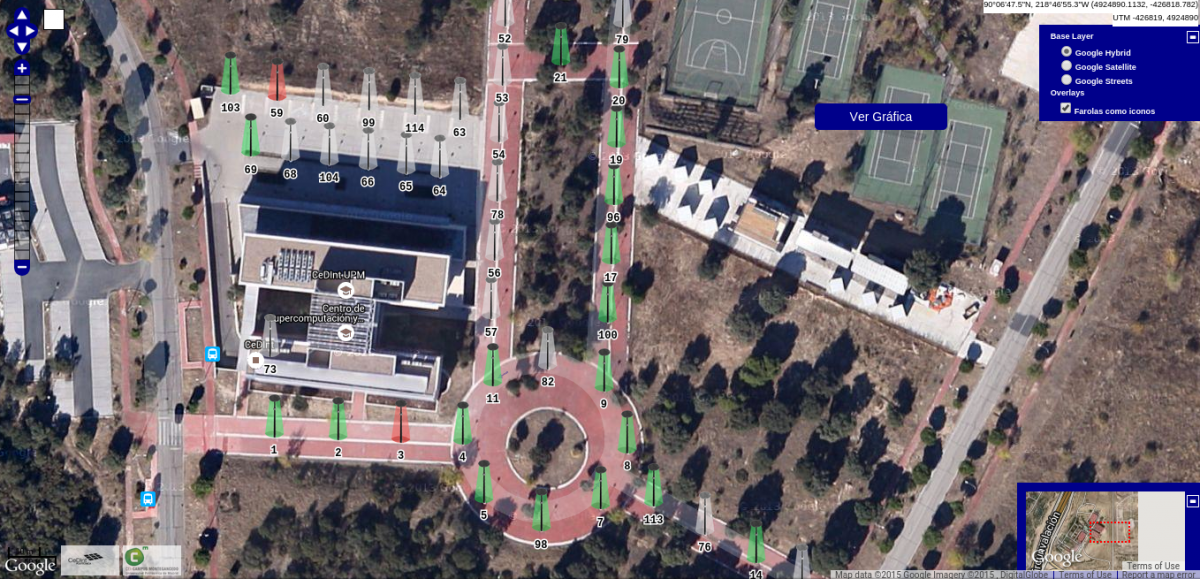
Figure 2. BatStreetLighting App
Once one of the streetlamps has been selected, a dialog box is displayed. There, the streetlamp’s identifier and its brightness level are shown. This brightness level can also be modified through the dialog box of the streetlight.
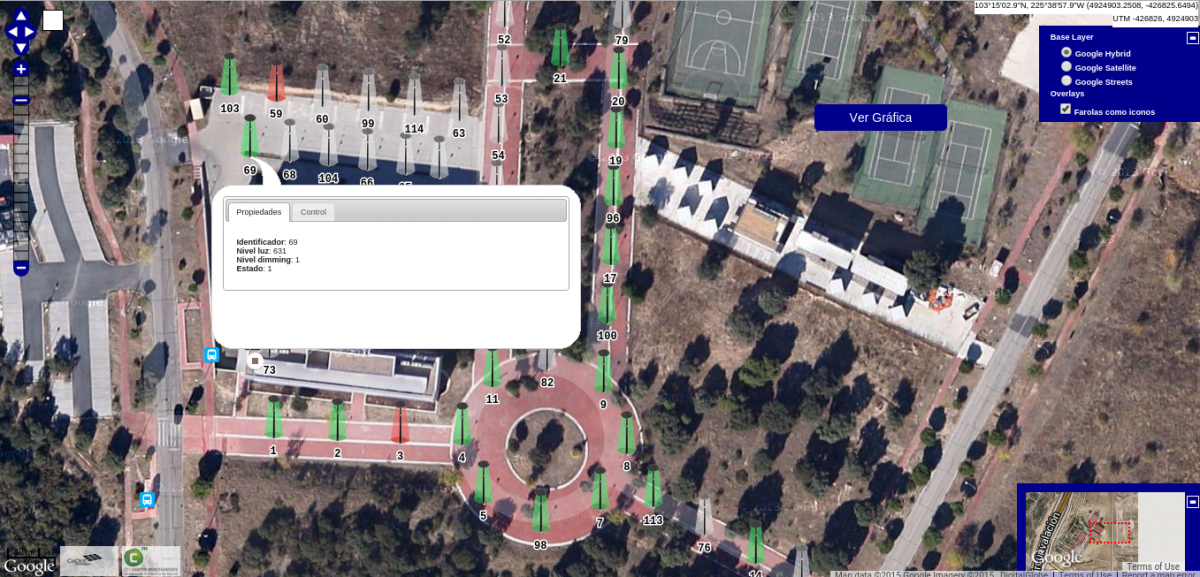
Figure 3. Changing the brightness level of a streetlamp in the BatStreetLighting app
- BatHome
This pilot project mixes the conclusions and results of the projects BatNet and BatMP. It contains a kit of home automation devices and an application with which they can be monitored and remotely managed.
The BatHome kit contains a device called BatLink, a device called BatMeter with a maximum of 6 current transformers (SCTs) and two devices called BatPlugs. It can be observed in the following figure.
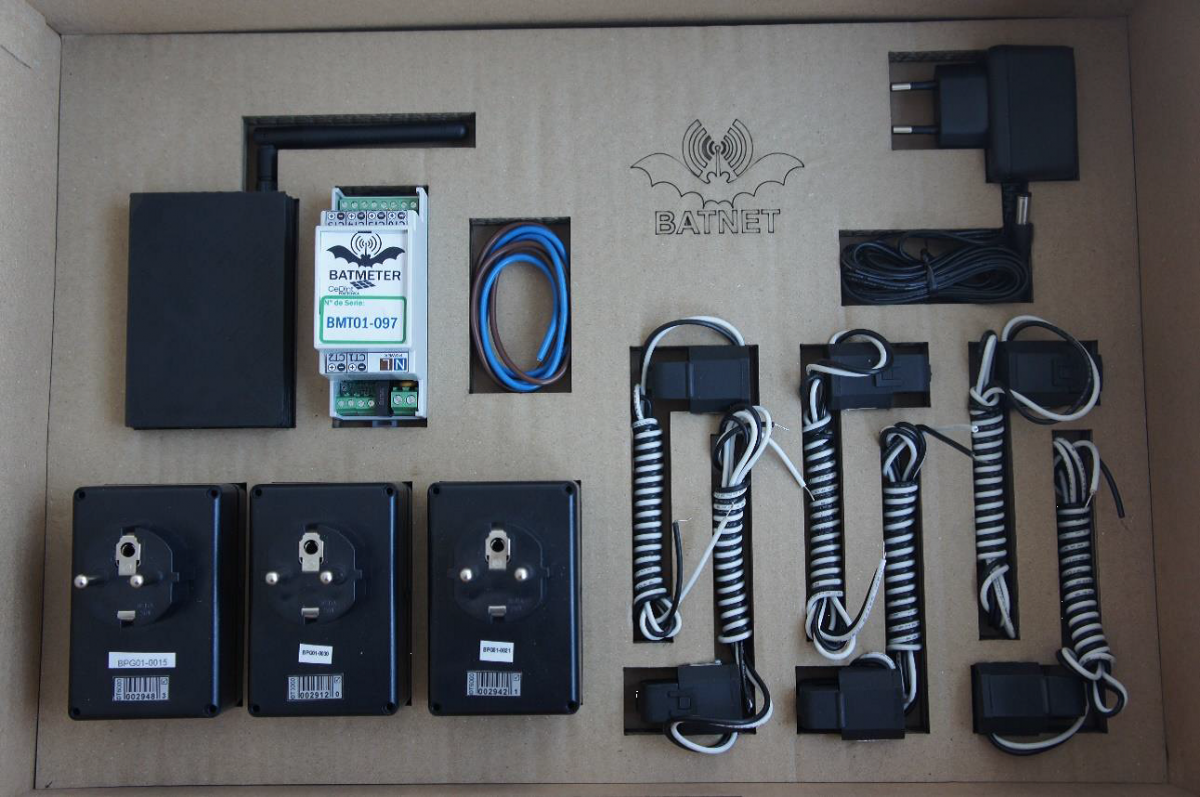
Figure 4. BatHome Kit
A more detailed description of these devices can be found in the section Internet of Things Lab.
A web application is also part of this pilot project. In this app the user, after configuring his appliances and electronic devices, is able to check his power consumption and act over certain devices such as the one called BatPlug.

Figure 5. BatHome App
- GreenLabs
This pilot project shows the research results obtained through the project which shares its name. Its aim is to reduce the power consumption of the laboratories and greenhouses of the CBGP building place in Montegancedo Campus.
This reduction of power consumption takes place through the use of a web application which has been designed to monitor and manage the data obtained from 70 BatMeters and 8 BatSenses (a BatMeter provides consumption measurements such as real or apparent power and voltage while a BatSense provides ambient measuments such as temperature or relative humidity). 25 LED lights were also installed in this building.
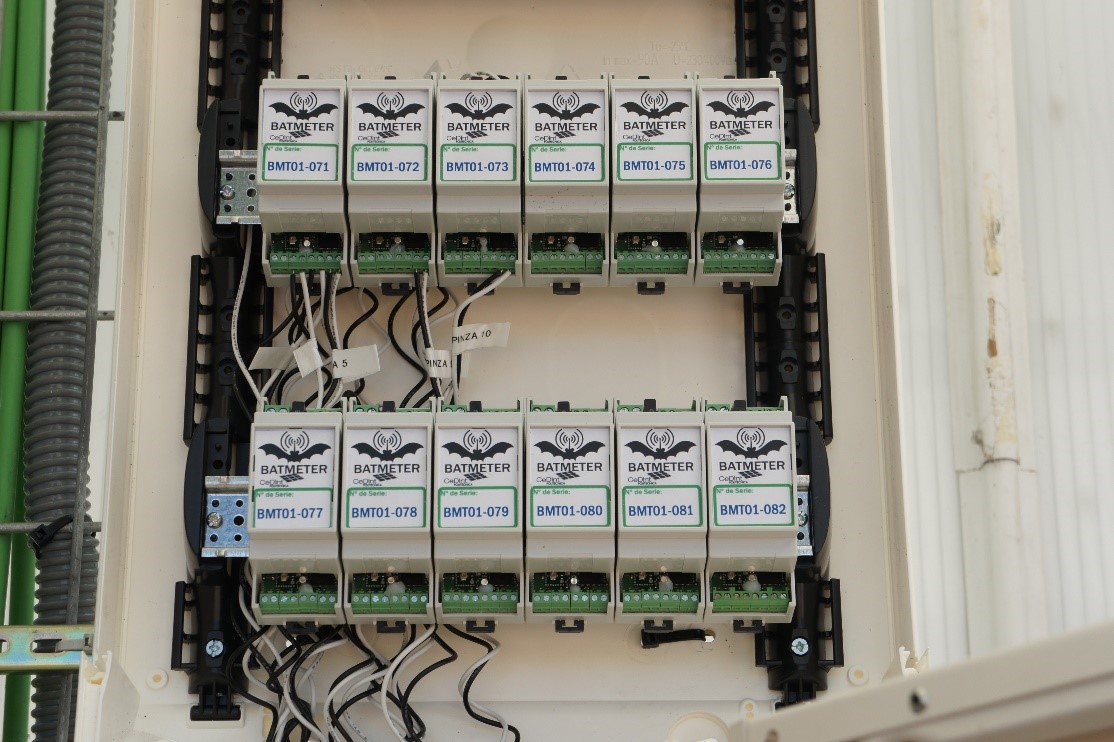
Figure 6. BatMeter GBPG instalation
Through this application the user is able to know how much the final power consumption of those rooms is in addition to the level of luminosity of each lamp. This level of luminosity can also be modified changing the value of its dimming in this app.
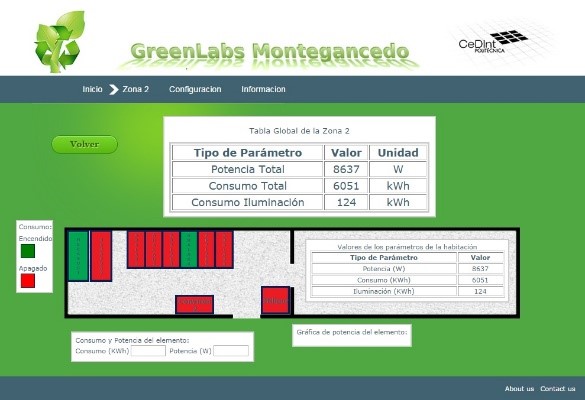
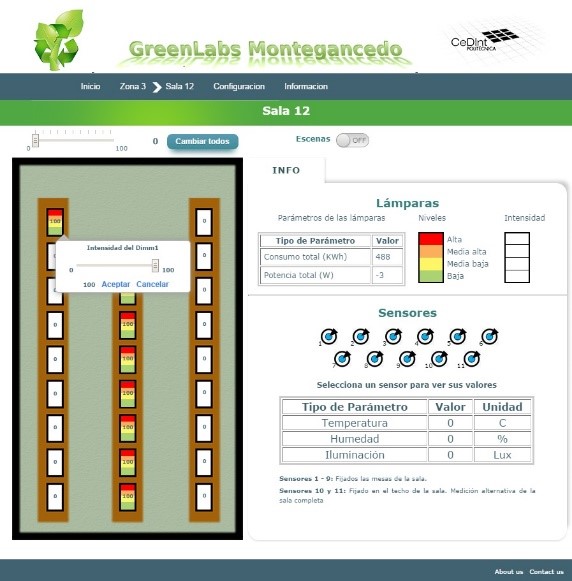
Figure 7. GreenLabs.App
- IAm (Inteligencia Ambiental)
This illumination system uses RGB LEDs (Red, Green and Blue) instead of white LEDS. It allows the creation of scenes using different light color schemes depending on the activity or the settings of the user. Through this pilot project the user can configure the light intensity and the illumination features so it can make the users feel comfortable with an optimum power consumption. The optimum power consumption is also due to the installation of the LED lamps which consume less power than the previous ones.
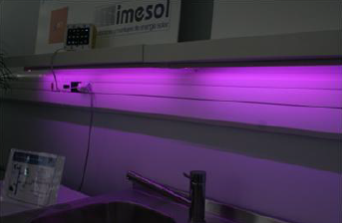
Figure 8. Illumination system RGB LED
- Bat-LED
This pilot project contains a series of LED lights which can be remotely controlled through the 6LoWPAN protocol. The aim of this project is the generation of ambient light which can be managed in an easy way. Through this pilot the color and the intensity of the light can be modified by the user.
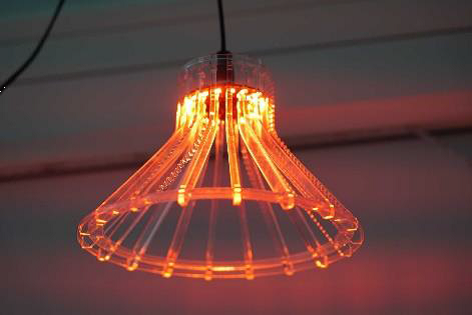
Figure 9. Bat-LED Light
- DENISE
The aim of this pilot project is to solve the need for innovative tools to facilitate a sustainable development of power systems due to the persistent growth of energy demand in the European market and the lack of communication between ICTs and traditional utilities services.
In this project a home automation system, a Residential Gateway, monitors and manages the household energy consumption.
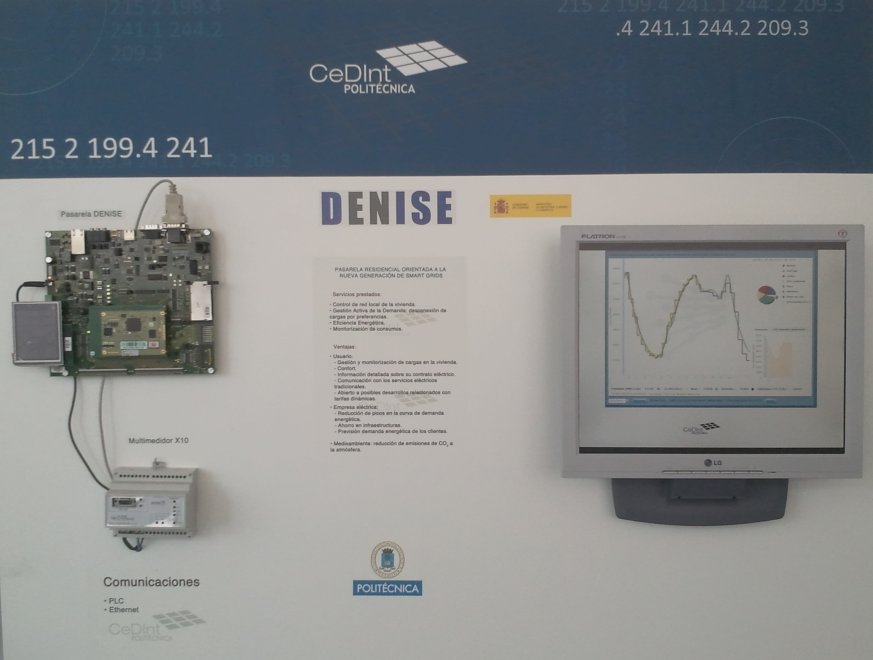
Figure 10. Pilot project DENISE
- e- MEDICIÓN
The pilot e- MEDICIÓN shows users their power and natural resources consumption in real time. This project provides the energy distributing companies with a single device through which they can obtain information from all kind of services.
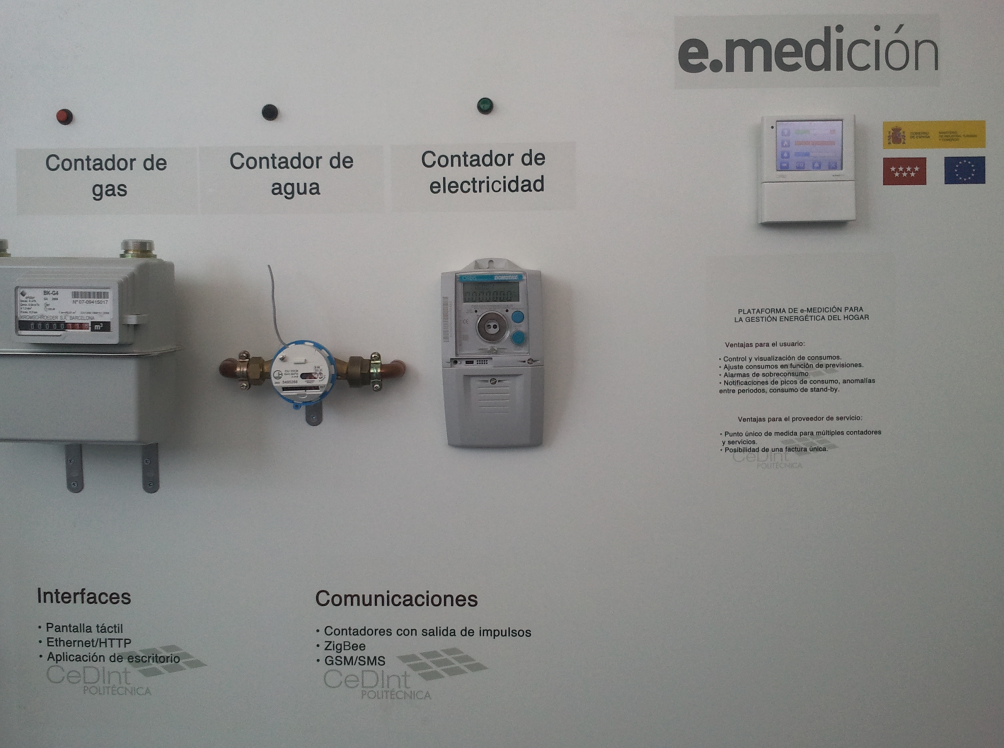
Figure 11. e-MEDICIÓN demonstrator

